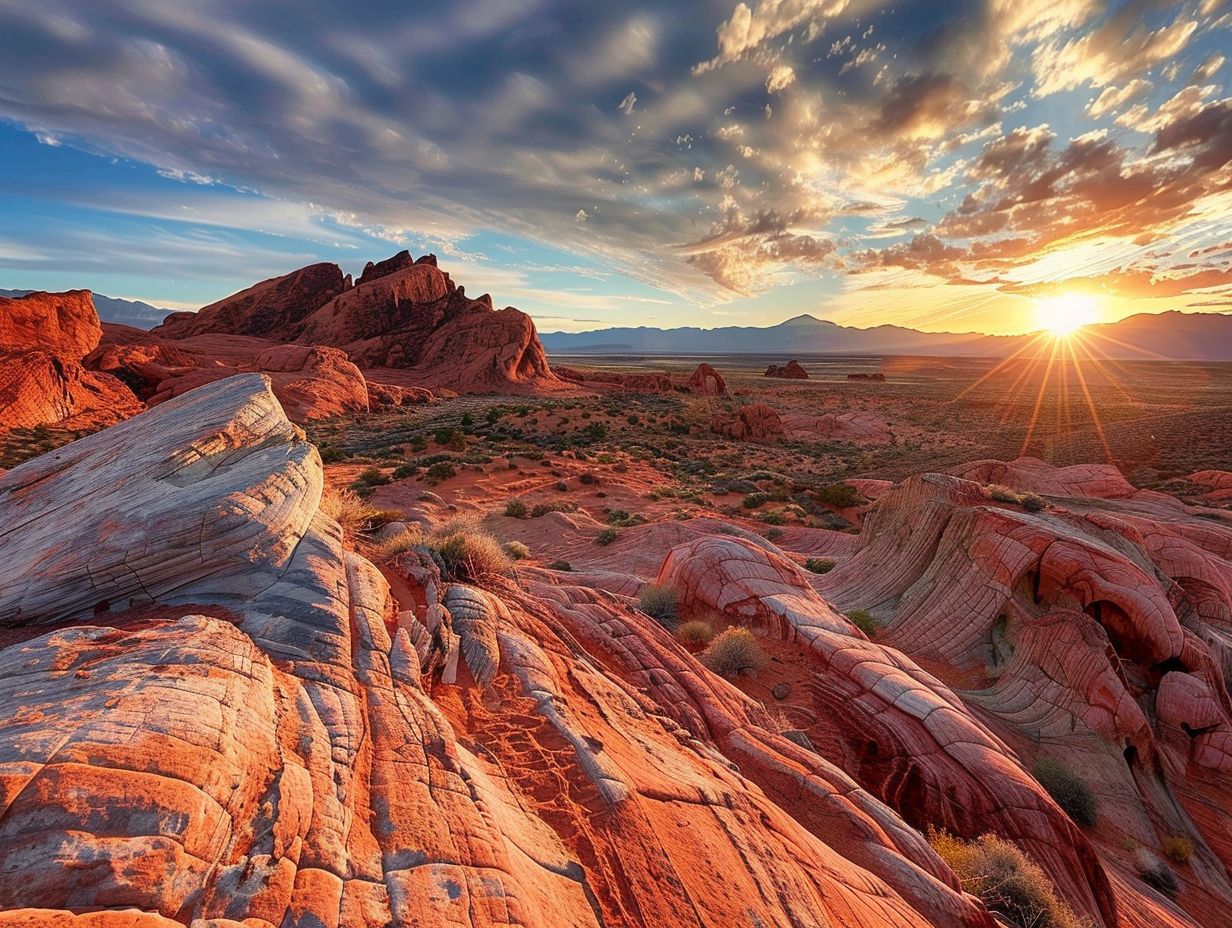Valley of Fire State Park is a stunning natural wonder located in the Mojave Desert of Nevada, known for its vibrant red sandstone formations and diverse plant life. As a state park touring enthusiast, you’ll be captivated by the unique and resilient plant species that thrive in this harsh desert environment.
Dominant Plant Species in Valley of Fire State Park
The park is primarily dominated by three plant species that have adapted remarkably well to the arid conditions:
-
Creosote Bush (Larrea tridentata): This evergreen shrub is one of the most common and recognizable plants in the park. Its distinctive, waxy leaves and yellow flowers are a testament to its ability to survive in the intense heat and limited rainfall of the Mojave Desert.
-
Burro Bush (Ambrosia dumosa): Also known as white bursage, this low-growing, gray-green shrub is another ubiquitous presence in the park. Its small, fuzzy leaves and inconspicuous flowers help it conserve water and thrive in the harsh environment.
-
Brittlebush (Encelia farinosa): This drought-tolerant shrub is known for its bright yellow flowers that bloom in the spring. Its silvery-gray, hairy leaves help reflect sunlight and reduce water loss, allowing it to flourish in the park’s arid conditions.
Cactus Species in Valley of Fire State Park

In addition to the dominant shrub species, the park is also home to several species of cactus, including:
- Beavertail Cactus (Opuntia basilaris): This low-growing, prickly pear cactus is easily recognizable by its flat, paddle-shaped pads and vibrant pink flowers.
- Cholla Cactus (Cylindropuntia spp.): These branching, cylindrical cacti, often referred to as “jumping cholla,” are known for their sharp, barbed spines that can easily detach and cling to unsuspecting passersby.
Springtime Blooms in Valley of Fire State Park
During the spring months, the park comes alive with a stunning display of wildflowers, adding splashes of color to the otherwise muted desert landscape. Some of the most notable spring bloomers include:
- Desert Marigold (Baileya multiradiata): These bright yellow, daisy-like flowers carpet the ground, creating a vibrant contrast against the red sandstone.
- Indigo Bush (Psorothamnus arborescens): This shrub produces clusters of deep purple flowers that attract a variety of pollinators, including bees and butterflies.
- Desert Mallow (Sphaeralcea ambigua): With its delicate, cup-shaped orange-red flowers, the desert mallow is a true desert beauty.
Documenting and Preserving the Park’s Plant Life
For those interested in contributing to the understanding and preservation of Valley of Fire State Park’s plant life, there are several ongoing initiatives and projects:
-
Valley of Fire State Park Wildflower Guide: This comprehensive guide, produced by the park, provides detailed information and photographs of 20 common plant species found within the park.
-
Valley of Fire State Park BioBlitz: This citizen science project invites visitors to work alongside biologists, botanists, and other experts to document the park’s plant and animal diversity.
-
Parks for Pollinators: This national program aims to raise awareness and support for the conservation of pollinator species, which play a crucial role in the health of the park’s ecosystems.
By participating in these projects, visitors can not only learn more about the park’s unique plant life but also contribute to its ongoing preservation and protection.
Visiting Valley of Fire State Park
Valley of Fire State Park is open daily from sunrise to sunset, with an entrance fee of $10 per vehicle. For those interested in guided tours, the park offers a variety of options, including jeep tours, hiking tours, and photography tours.
When visiting the park, it’s important to come prepared for the harsh desert environment. Bring plenty of water, wear sun-protective clothing and sturdy footwear, and be mindful of the park’s fragile ecosystems. By respecting the park’s natural resources and following Leave No Trace principles, visitors can help ensure that the diverse plant life of Valley of Fire State Park continues to thrive for generations to come.

